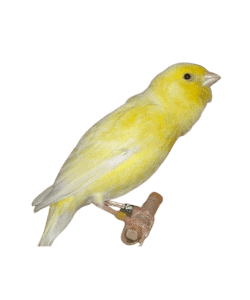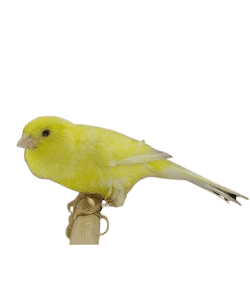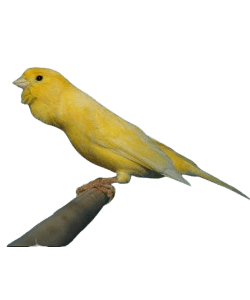German Roller Canary
The German Roller Canary bird is a beautiful and elegant creature that has been captivating the hearts of people for centuries. This regal bird is not only lovely to look at but also has a sweet and melodic voice that will fill your home with music.
The German Roller Canary is a strong and hardy bird that originates from the mountainous regions of Germany. These birds were originally bred for their singing ability and were prize possessions of wealthy landowners and nobles.
The German Roller Canary is still prized today for its singing ability and is a popular choice for those looking for a pet bird. This Canary is also known for its good health and long lifespan making it a great choice for those looking for a lifelong companion.
If you’re looking for a beautiful, musical companion, then look no further than the German Roller Canary! These birds are not only easy on the eyes but also have an enchanting voice that will fill your home with song.
Introduction:

Roller Canaries were originally bred by crossing two different types of canaries: the Harz Roller and the Gloster Fancy Canary. The resulting offspring were then selectively bred to amplify their acrobatic abilities.
Today, Roller Canaries are one of the most popular types of canaries in the world and are kept as pets.
If you’re thinking about getting a Roller Canary as a pet, there are a few things you should know first. This article will cover everything you need to know about Roller Canaries, including their history, breeding, health, and more.
History:

The German Roller is a small bird, measuring just five to six inches in length. It has a round body shape and a short, blunt beak. German Rollers are known for their beautiful plumage, which is usually yellow or white with black markings.
They also have long feathers on their legs, which give them a distinctive appearance. German Rollers are fun-loving birds that enjoy interacting with their human companion. German Rollers make great pets for families with children, as they are very tolerant of being handled.
Like all canaries, German Rollers require a diet that is high in vitamins and minerals to stay healthy. They should be given a commercial canary seed mix and fresh fruits and vegetables daily.
A cuttlebone or mineral block should also be made available to them to gnaw on and help keep their beaks trim. German Rollers should have access to clean water at all times.
Breed:
German Roller Canary Birds are bred in a variety of colors, including yellow, white, red, and orange.

German Roller Canary Birds are usually between 4 and 6 inches long and weigh between 2 and 4 ounces. They have straight beaks and round bodies with long tails. The plumage of these birds is usually yellow or white, but it can also be orange, red, or brown.
German Roller Canary Birds typically live for 8 to 13 years in captivity. However, they may live even longer if they are well cared for.
Health:
German Roller Canary birds are generally healthy birds, but there are some health problems that are associated with this breed. These health problems include respiratory problems, heart disease, and cancer.
However, these birds are also very sensitive to weather conditions. They need care in both the winter and summer seasons. Cold, flu, and other diseases can easily attack these birds which may result in severe conditions.
Benefits:
Canaries were originally bred for their song, and many people still keep them as pets for this purpose. Canaries are relatively easy to care for compared to other pets, and they do not require a lot of space. They are also relatively disease-resistant and have a long lifespan.
Canaries can make good companion birds for people of all ages and can be kept singly or in pairs. They are generally quiet birds and do not require a lot of attention. Canaries are also good “starter” birds for people who are interested in keeping birds but are not sure if they are ready for something more high-maintenance, such as a parrot.
German Roller Canary as a Pet:

Roller canaries are active birds that enjoy spending time out of their cage, so it is important to provide them with plenty of toys and perches. They also enjoy bathing, so a small birdbath or misting bottle can be a great way to keep them happy and healthy.
These birds are social creatures and do best when kept in pairs or small groups. They are not overly aggressive but can be territorial with other birds, so it is important to provide them with plenty of space.
Roller canaries are relatively hardy birds, but like all pets, they are susceptible to health problems if they are not well cared for. Some common health problems include respiratory infections, crop infections, mite infestations, and vitamin A deficiency.
FAQs about German Roller canaries:
What is a German Roller Canary?
The German Roller Canary is a type of canary bird that is known for its beautiful singing. It’s originally from Germany and cross of two canaries.
What do roller canaries eat?
Roller canaries should have a diet that consists of fresh fruits and vegetables, as well as a high-quality seed mix or pellet food. It is important to avoid processed foods and foods that contain artificial colors or flavors.
How much space do roller canaries need?
Roller canaries need at least 2-3 cubic feet of space per bird. If you are keeping more than one bird, you will need to add an additional 1-2 cubic feet of space for each additional bird.
What type of cage is best for roller canaries?
Roller canaries do well in a variety of cage types, but it is important to choose a cage that is made from safe materials and that has plenty of room for the birds to move around. Wire cages are not recommended as they can injure the birds’ feet.
What is the difference between a German Roller Canary and a regular canary?
The German Roller Canary has a different singing tone which is not too much high, and their song is more complex than that of a regular canary.
How do I care for my German Roller Canary?
German Roller Canaries are relatively easy to care for. They need a clean cage, fresh water, and a diet of high-quality seed mix and fresh vegetables.
What are the best foods for my German Roller Canary?
A diet for a German Roller Canary should consist of about 20-30% fresh vegetables, such as dark leafy greens, carrots, and peas. The remaining 70-80% should be made up of a high-quality seed mix with added vitamin supplements.
What are some health concerns I should be aware of with my German Roller Canary?
Some common health concerns with German Roller Canaries include respiratory problems, sinus infections, and feather plucking.

